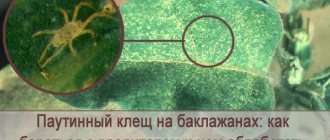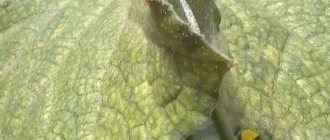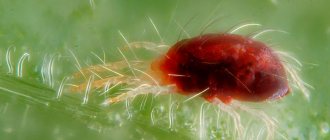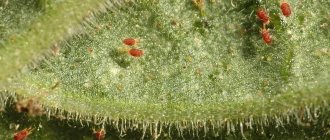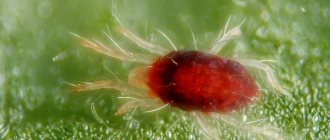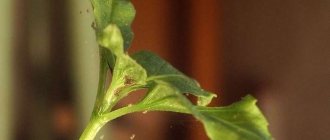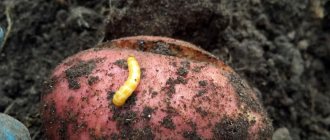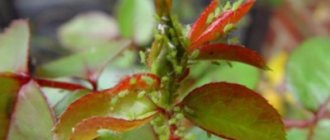The spider mite is a small insect that, due to its high reproduction rate, can quickly destroy the sowing of cucumbers, is a real misfortune for gardeners. It is very difficult to deal with this pest, since it is able to get used to various types of poison used in the fight against it, and continue to actively multiply, harming the crop.
In order to understand how to get rid of these parasites, you need to know in what conditions they multiply and what means of fighting them are most effective.
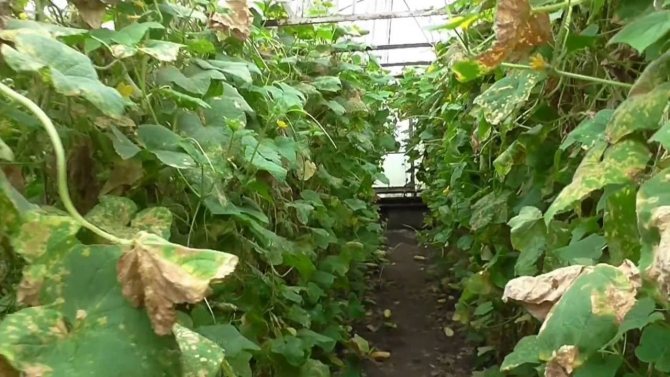
What is a spider mite?
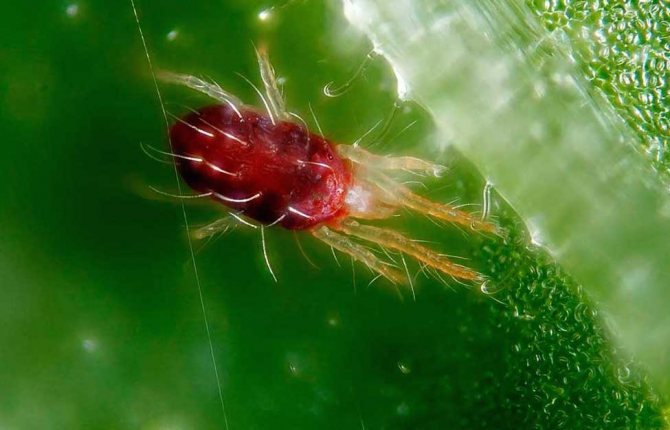

It is almost impossible to notice a spider mite with the naked eye
A spider mite is an arachnid insect, a polyphagous pest. It feeds on plants planted in greenhouse conditions or open ground. The mite is especially harmful to cultivated plants in greenhouses, in particular to cucumbers.
The adult spider mite is very small - only 1 mm in length. Finding it on cucumber plantings in a greenhouse is usually very difficult. To do this, you need to take a magnifying glass and carefully examine the back side of the leaves of the vegetable crop. Visually assessing the size of the disaster, without special devices, is possible only when the tick population grows strongly.
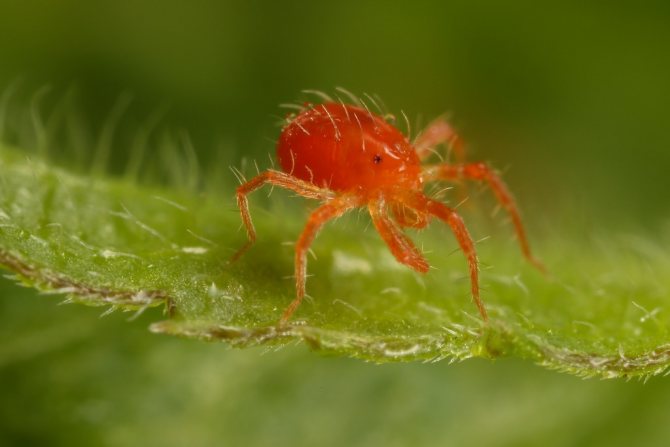

Red variety of spider mites
Females are slightly larger than males, their size can reach 2 mm if food is sufficient. The color of the calf varies depending on the type of insect and habitat. There are milky transparent, orange, red individuals. Males have a more elongated body, and females are distinguished by a bright color.
The body of the insect is soft, has four pairs of legs. The larvae are very small, have a greenish tint and have dark spots on the sides. The spider mite is very fertile, every 3-4 hours the female lays up to 500 eggs. The insect population is growing at a tremendous rate, so the gardener, if he detects a pest on cultural plantings, needs to act immediately.
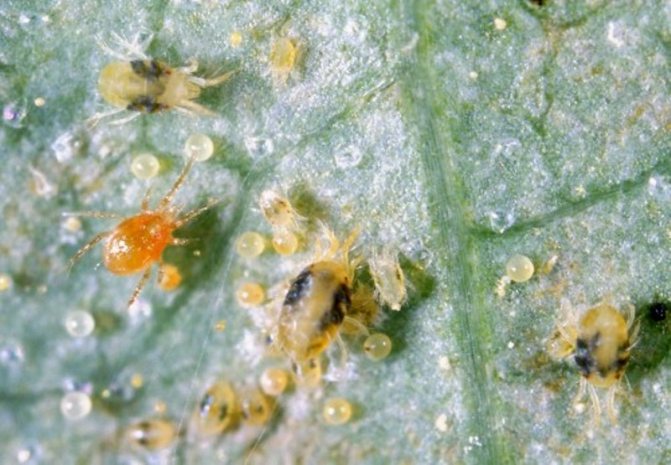

Spider mite eggs
The larvae develop in different ways. If the temperature in the greenhouse is set at about + 15 ° C, their development period will be approximately 15 days. At elevated temperatures, up to 48 degrees, the hatching period will be from 48 to 72 hours. The life span of a spider mite is on average 5 days.
As soon as the relative cold in the greenhouse sets in, the females leave for the winter. Some can descend into the lower part of the greenhouse, looking for a comfortable refuge for themselves, while others go up. That is why measures to combat spider mites on cucumbers in a greenhouse should include careful processing of the room itself, from top to bottom.
Reasons for infection


Spider mite infested cucumbers
The main reason for the appearance of a pest in a greenhouse is considered to be an increased temperature and low humidity in the room.
This usually happens if the temperature in the greenhouse reaches + 30 ° C or more. That is why the tick often infects plants growing in the southern regions of our country.
In addition, common causes of the appearance of a tick are:
- non-compliance with crop rotation;
- soil contaminated since autumn;
- wooden structures of the greenhouse, previously infected with a tick.
Fatty plants are most to the taste of the pest, which gain green mass to the detriment of fruits. Most often, this process occurs when there is an excess of nitrogen fertilizers in the soil. This must be strictly monitored when planting plants in the ground.
Also, the insect is able to settle in old dried cucumber leaves. In the spring, as soon as positive temperatures come, females move to young shoots and begin to actively lay eggs, multiplying the population at times in the shortest possible time.
Most often, the primary lesions by the pest occur on the upper leaves, but then the adults move to the lower tops. This makes them almost invisible to the naked eye of the gardener. The fact is that usually less attention is paid to the lower leaves and the pest goes unnoticed for a long time.
Preventive actions
With the help of preventive actions, you can minimize the likelihood of a pest appearing. All prevention consists in simple actions, but they are effective and reliable, the main thing is to carry them out regularly.
As mentioned earlier, cucumber mites are quite dependent on external conditions, if warm and dry they multiply quickly, when conditions are not good enough, the development processes slow down.
In this case, it is necessary to create unfavorable conditions for them. You will also need to take measures to prevent the appearance of these pests on the plant.
Signs of pest damage
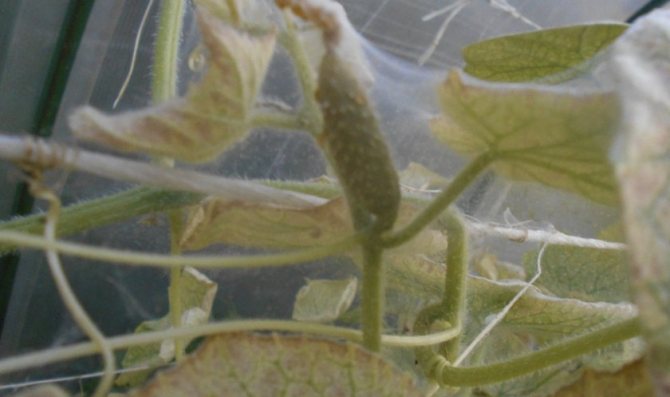

The presence of a light web indicates the appearance of a parasite
Cucumber leaf cells are the main food for spider mites. The plant begins to weaken, losing its defenses, and becomes vulnerable to many secondary diseases. Often thereafter, infection with gray mold spores occurs.
Pests can be seen at the tips of the leaves, they look like many small moving larvae. Over time, a thin white web envelops the leaves of the plant, and a huge number of white dots are found on the back of the leaf.
If the plant is not treated in any way and the insect is not treated with special agents, the cucumber leaves will become dry and devoid of life. Brown, curled edges or dots all over the leaf can also indicate a spider mite infestation.
In the garden
Before planting, it is necessary to dig up the soil very well, and this will also need to be done after harvesting. Weed removal is a very important preventive measure. In early spring, weeds are the main source of food, so it is precisely their removal that will prevent infestation of cucumbers.
A very useful calendula is planted between the bushes, which pests cannot tolerate. If infected leaves are found, they must be immediately disposed of and do not forget to burn. After the harvest is harvested, all the bushes must be harvested and burned.
Remember that these cucumber pests can cause tremendous damage to the plant, which will certainly be reflected in the harvest. Prevention will maximize the protection of the plant, but if an infection has occurred it is necessary to take effective measures as soon as possible.
The main ways of dealing with a pest


Processing cucumbers with special preparations
With the establishment and modernization of the chemical industry, special synthetic agents have become available that quickly deal with harmful insects. However, many gardeners try to exclude as much as possible the effect of pesticides on the soil and plants on the site, therefore biologically active substances and folk remedies are also used.
Often, for prophylactic purposes and as an auxiliary method of combating the pest, planting plants that are dangerous for the mite are used in the greenhouse.Thus, measures to combat spider mites must be comprehensive in order to quickly and permanently rid cultivated plants from infection and preserve their harvest.
Pesticide
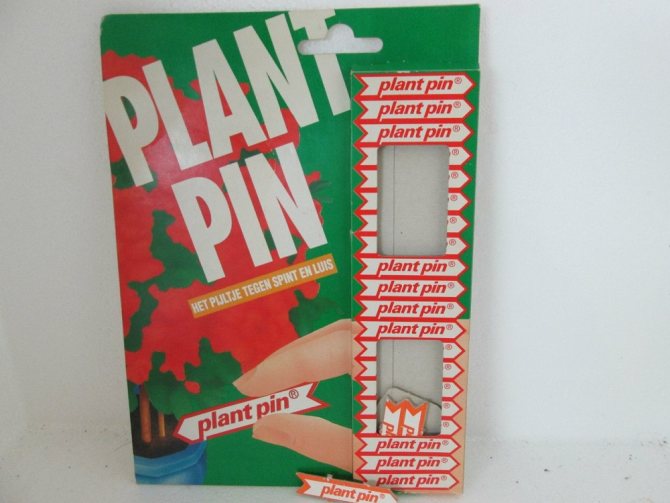

Plant-Pin
You can find a wide range of insecticides in stores. However, this is an extreme method that should be used to get rid of the pest insect. Such funds have a high toxic effect on the surrounding nature and on the person himself. In addition, the tick is quickly addictive during processing. Therefore, one and the same chemical agent cannot be sprayed on cucumber plantings in the greenhouse more than 2 - 3 times.
The most popular means are:
- Plant-Pin;
- Karbofos;
- Etisso;
- Apollo;
- Vertimek;
- Flumite and others.
Some of them are available in the form of granules that need to be diluted in water and treated with a spray bottle. They act in an intestinal way or destroy adults and larvae with a direct hit.
Individual substances are even able to feed a cucumber bush along the way. Other products come in the form of dense sticks. They are buried in the ground next to cultural plantings.
It is important to imagine the developmental cycle of an insect from larva to adult and to compare the processing intervals. So, in dry and hot weather, it is recommended to spray cucumbers in the greenhouse at least 1 time per week. The main thing is to understand that spraying alone will not be enough to get rid of the pest.
Spraying plants with special means must be carried out in the evening. This is due to the action of the sun's rays. It promotes rapid evaporation of sprayed substances and a decrease in the concentration of active ingredients at the processing site.
You should also take care of personal protective equipment. A person needs to put on a special suit or dressing gown, also get a respirator and goggles or a special mask and put on gloves. So the health of the gardener will be in order after processing the cucumbers in the greenhouse.
Biologically active drugs
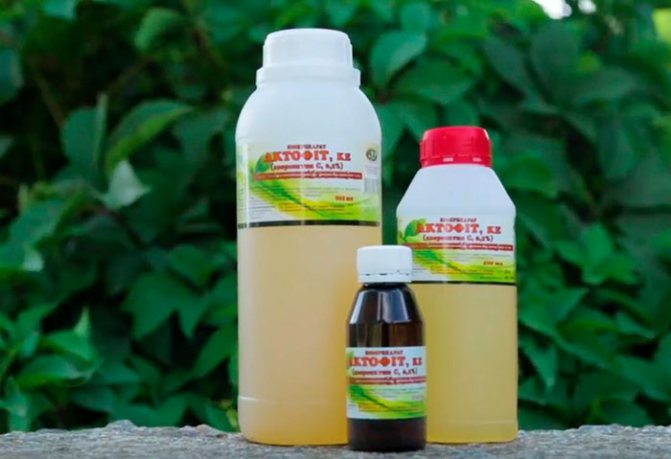

Aktofit
Means created on the basis of natural ingredients, biologically active substances, are absolutely harmless to the plant, therefore they are preferable for use by most gardeners. They are used during watering. The active components enter the structure of the plant without damaging its condition, and then enter the body of the pest, which feeds on cucumber leaves.
Subsequently, there is a rapid paralysis of the insect, and then its death occurs. Moreover, the first results can be noticed very quickly, after 12 hours there will already be many dead spider mites. Also, bio-substances have a long-term effect.
The most popular among agronomists and owners of personal plots are:
- Aktofit;
- Vertimek;
- Agravertine;
- Bi 58;
- Kleschevit and others.
The principle of their work is almost identical. Moreover, they are harmless to the environment, the person himself and his pets. The main thing is to follow the treatment scheme and the precautions mentioned in the instructions for use. The defeat of the pest occurs only when the leaves are consumed as food. Therefore, this method is good for the destruction of larvae and adults.
Prevention measures
When growing cucumbers, one should not forget about the prevention of spider mite damage. The main measures to prevent infection:
- carefully remove weeds in the greenhouse, especially nettles, shepherd's purse and quinoa;
- with a large number of weeds, remove and disinfect the topsoil or replace it with fresh;
- process all greenhouse structures with a blowtorch or gas torch;
- in the fall, fumigate the greenhouse with a sulfur stick and disinfect all equipment;
- plant pest-resistant cucumber varieties, usually they have thick leaves with hard hairs on the back surface;
- water the plants in a timely manner, since with insufficient watering they are more susceptible to infection;
- use a rare planting of seedlings, which prevents the rapid spread of infection to neighboring plants.


So, inspect the cucumbers every 2-3 days, and if you notice that a cobweb has appeared and the leaves turn yellow, do not hesitate and take measures to get rid of ticks. The sooner you start to fight, the more chances you have to prevent further spread of the pest and completely preserve the crop.
Plants dangerous for spider mites


The scent of marigolds repels parasites
To prevent or remove spider mites from the greenhouse, planting of pest-repelling plants between the rows of cucumber plantings is also used. This method is used in combination with biological treatments. Plants with a rich aroma are considered unpleasant for a tick:
- marigold;
- sagebrush;
- nasturtium;
- onion;
- garlic;
- yarrow and others.
Besides planting aromatic plants, another safe method can be used as an aid. Moss or bark is thoroughly treated with boiling water and then dried. This will allow the raw material to be disinfected. After drying, the material is buried in the soil, near the plantings of cucumber plants. This method also helps to get rid of the tick in conjunction with other methods.
What do affected cucumbers look like?
You can notice the pest with a careful examination of the culture. Obvious signs of defeat appear already with a significant number of the colony. The spider mite feeds on plant juices at different stages of development.
Important!
Light spots appear on the leaves of the cucumber, then dark ones. From below, ticks envelop the leaf with cobwebs, so it curls up. After a few days of parasitism, the culture begins to dry, the buds fall off, the fruits do not develop. A spider mite on cucumber seedlings is able to destroy the plant in a week.
A photo of cucumber diseases developing against the background of infection with small parasites is presented below.
Folk recipes


Cooking a decoction of tomato tops
During the period of active fruiting, if the pest was not identified in the early stages, only folk remedies can be used. This is because the fruits should not be affected by chemical or biologically active substances. Therefore, decoctions and infusions based on various plants are used.
You can treat cucumbers for spider mites with the following homemade products:
- infusion of marigolds (the recipe is very simple, the fragrant flowers are placed in a bucket (10 liters), then they are poured with water slightly heated over a fire, insisted for 2 days and shavings made from laundry soap are added, mixed thoroughly and filtered through cheesecloth, you need to process the back side of the leaves);
- infusion of potato tops (the cooking method is similar, half a bucket of tops is poured with warm water and insisted for 5 hours, then the cucumber plantings are filtered and processed in the greenhouse, sanitary spraying is carried out once a week);
- infusion of tomato tops (put tomato tops in a 10-liter bucket, add water and simmer for half an hour, allow to cool and add 40 g of tar soap shavings, let it brew, before filling the spray bottle, the concentrate must be diluted in a 1: 2 ratio and only after that spray cucumber bushes);
- infusion of garlic (thoroughly grind a vegetable in the amount of 2 heads, pour a liter of warm water and leave for 5 days, before using the infusion you will have to pass through cheesecloth and dilute the concentrate in a 1: 2 ratio);
- infusion of hogweed root (Pour the crushed root of the plant, collected before or after flowering, with warm water, take about 10 liters of water for 1 kg of raw materials, after a day you can pour the product into a spray bottle and spray the plants in the greenhouse).
It is important to understand that folk recipes are effective as preventive substances against the appearance of a spider mite, but they are unlikely to be able to cope with the pest on their own. It is reasonable to use folk recipes as measures to combat spider mites on cucumbers in conjunction with other methods, for example, treatment with bioactive drugs.
Agrotechnical control methods


Greenhouse cucumber care
Proper care of the greenhouse where the cucumbers have been planted will ensure the absence of spider mites if the gardener follows all the instructions of experienced agronomists. Sometimes even the implementation of simple agrotechnical techniques makes it possible to protect yourself from a dangerous pest that damages cultural plantings.
Among the preferred methods of care are:
- constant monitoring of the nitrogen level in the soil under plantings;
- moderate watering of plants;
- application of fertilizers with a high content of potassium and phosphorus;
- loosening and regular weeding of the soil;
- crop rotation;
- compliance with the distance between the bushes when planting;
- disinfection of the greenhouse after autumn cleaning;
- control of the humidity level in the greenhouse;
- air temperature regulation;
- treatment with disinfectants of the fertile soil layer.
Among other things, you need to choose varieties of cucumbers that have increased resistance to spider mite lesions. The most resilient are Benefis, Murashka, Rodnichok and 5 stars.
In greenhouses
Pests simply cannot find better conditions than in a greenhouse. It's warm, dry, there is food and you can easily overwinter in the ground. But these conditions are easy to spoil, it is enough to raise the humidity to 70%. Not only will they not like this level of humidity, it will lead to their death.
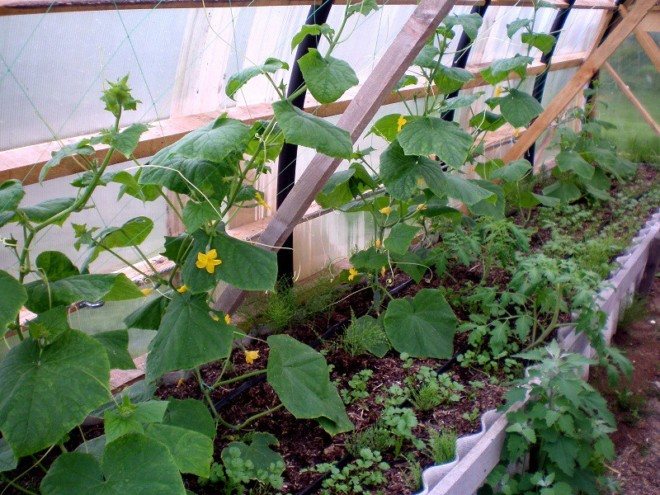

It will also be necessary to dig up the soil very well after harvesting, paying special attention to places in the corners where females are most often hiding for wintering. A good prevention will be the enrichment of the soil with phosphorus fertilizers.


